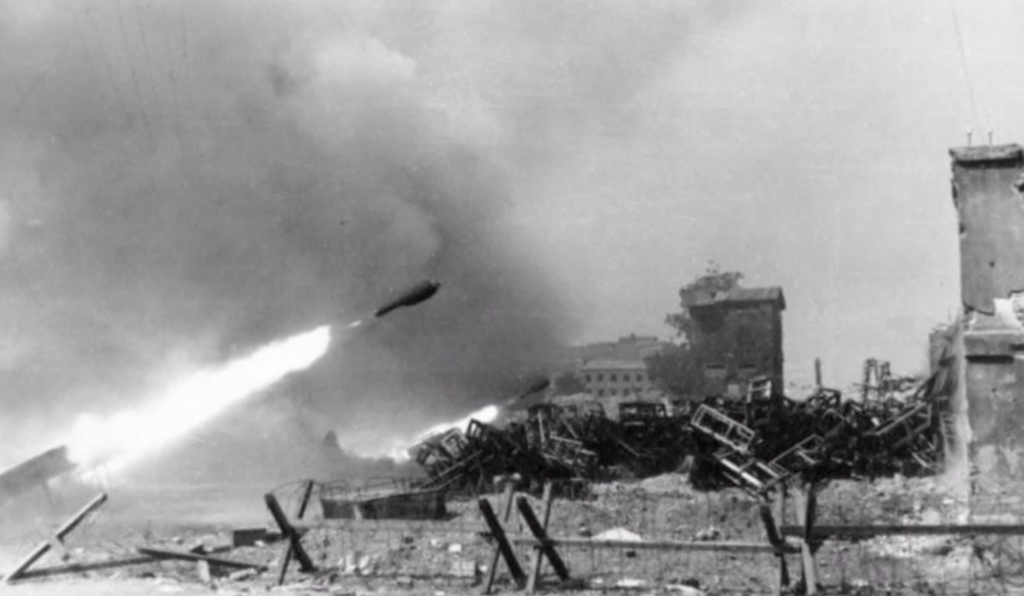- Esileht
- The Screaming Cow
- Esileht
- The Screaming Cow
- Programmid
- The Screaming Cow
- Uudised
- The Screaming Cow
- Projektid
- The Screaming Cow

During World War II, the Germans used rocket-propelled artillery nicknamed “Heulende Kuh” (“Screaming Cow”) due to the distinctive howling sound of the rocket motors. In contrast, the Soviet Union deployed similar weapons known as “Katyusha” and “Andryusha.” You’ll find an extensive selection of rocket types from both sides in our permanent exhibition.
Germany introduced rocket launchers into service in 1941 after several years of successful testing. These systems were mainly used to create thick smoke screens and for massed fire. Highly mobile and powerful, they lacked the precision of traditional artillery but made up for it with sheer firepower.
The most common German systems included:
15 cm Nebelwerfer 41, a six-barrelled 150 mm launcher
21 cm Nebelwerfer 42, a five-barrelled 210 mm system
28/32 cm Nebelwerfer 41, which fired two types of large-calibre rockets:
28 cm WK Spreng, carrying ~50 kg of TNT, with a range of ~2,000 metres
32 cm WK Flam, filled with 40 litres of incendiary liquid, covering about 200 m² with burning material
These rockets were used for explosive, incendiary, and smoke effects across large areas, and their eerie howling sound earned them their battlefield nickname. There were even experimental attempts to launch them from German submarines, though these tests were ultimately unsuccessful due to the instability of the platforms (erenow.org, 2025).
On the Soviet side, the BM-13 “Katyusha” rocket launcher demonstrated its devastating effectiveness early in the war. Each launcher fired sixteen 130 mm M-13 rockets, each with a 4.9 kg warhead.
In 1942, the Soviets developed the M-30—a more powerful 300 mm overcalibre rocket nicknamed “Andryusha.” It weighed 72 kg and carried 28.9 kg of explosives. Due to its distinctive shape, the M-30 was also nicknamed “Luka”, referencing the main character in a pornographic poem by 19th-century writer Ivan Barkov, Luka Mudishchev.
The M-30 had a flight speed of around 195 km/h and a range of 2,800 metres. Its wooden launch racks and frames were built in the Kompressor factory in Moscow, partly inspired by German design. Due to their inaccuracy, these rockets were used in massed salvos—576 rockets could be fired over a 1 km frontline by 144 batteries. The M-30 could penetrate a 75 cm brick wall or create a crater 8 metres wide and 2.5 metres deep. The Soviets also copied the German 28 cm rocket design, including the principles of their launch systems (TopWar, 2015).